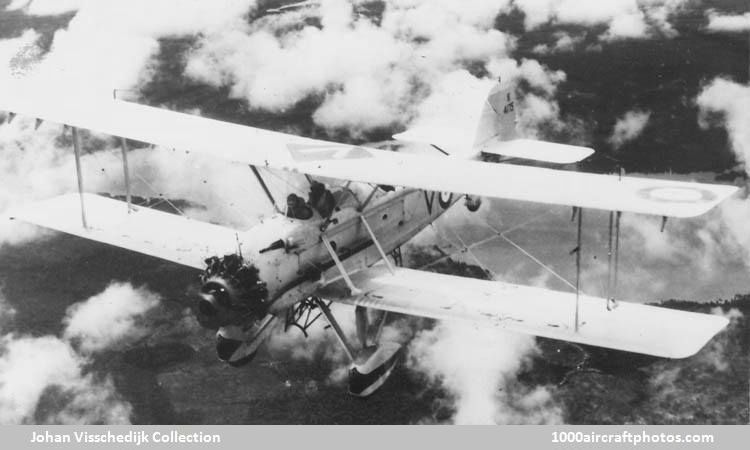12/31/2010. Remarks by Johan Visschedijk: "When 30 Mk.II Vildebeests had been completed the Air Ministry requested the addition of a third crew member in a redesigned rear cockpit. With this modification the airframe became the Mk.III, to specification 15/34.
This new requirement arose through service experience with the Vildebeest, which called for a more precise operational technique in the torpedo-dropping role. Much trial-and-error experience was being gained in practice with the Vildebeest over the Stokes Bay torpedo range at Gosport. The pattern of torpedo-dropping from aircraft was developed in these exercises and led to a perfection of the art to be used with great effect in the second world war, notably with the Fairey Swordfish.
The Mk.III Vildebeests were delivered to No. 36 Squadron in 1934 and to No. 22 Squadron in 1935, both torpedo-bomber units. Also in 1935 the New Zealand Government evaluated the aircraft and bought 12 Mk.IIIs for the Royal New Zealand AF; later they acquired another 15 Mk.IIIs from the Air Ministry contract, and the RAF serial numbers were changed to NZ numbers. One difference in the New Zealand Vildebeests was the provision of folding wings.
Continuous improvements and developments in the Bristol range of air-cooled radial engines led to the introduction of the 825 hp Perseus sleeve-valve type. The prototype Perseus PRE-4M engine was installed in a Mk III Vildebeest, s/n K4164, and a Rotol three-blade variable-pitch propeller was fitted as a further refinement. The production Bristol Perseus VIII became the first sleeve-valve radial engine to enter service, civil or military, in the Vildebeest Mk.IV."
